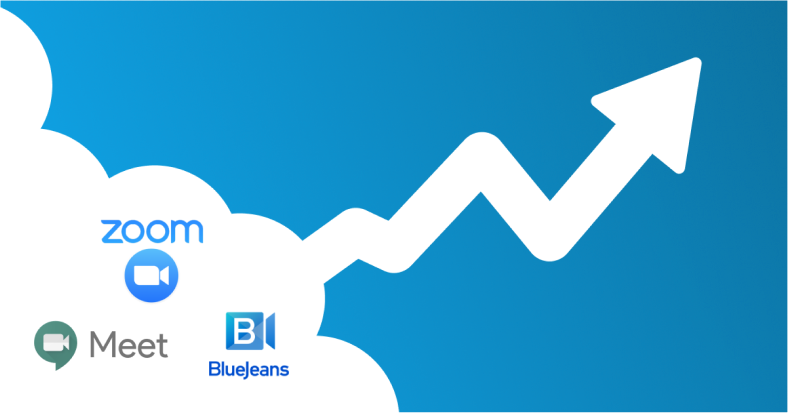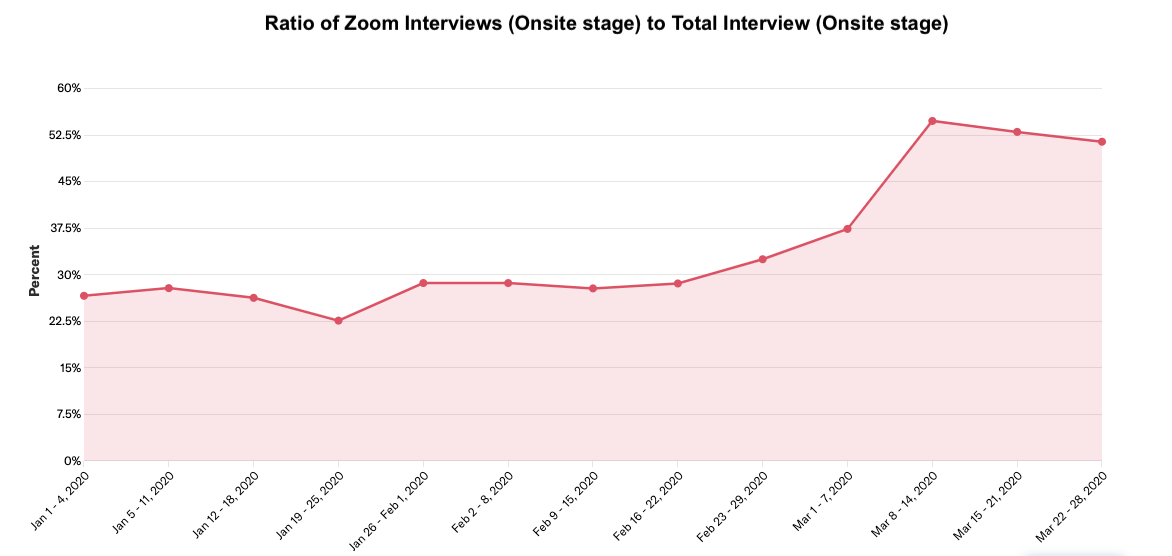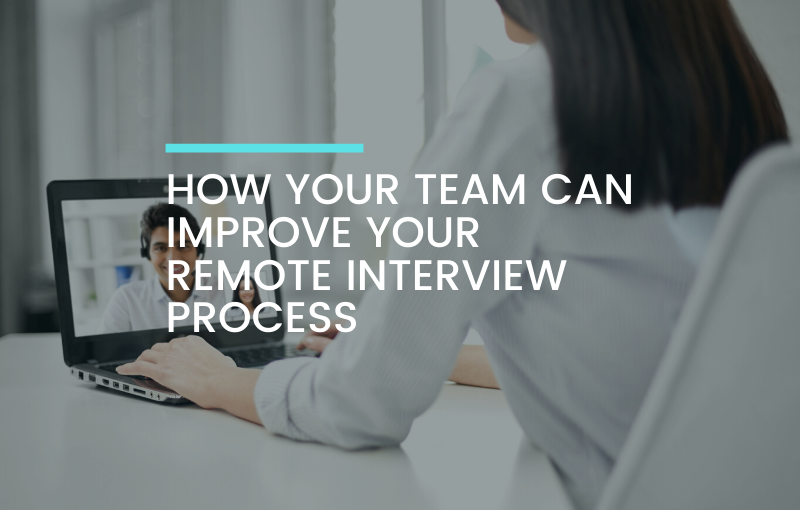How Your Team Can Improve Your Remote Interview Process

Video interviews increase 101% in March
Lockdowns from COVID-19 are pushing more companies to interview remotely. Over the past few weeks, our team analyzed data on thousands of interviews. Here’s what we found:
Zoom interviews increased by 94%
In February, Zoom interviews made up about 27% of all recruiting interviews scheduled. By the 2nd week of March, this number spiked to nearly 54%.

Google Meet interviews increased by 106%
In February, Google Meets made up about 16% of all recruiting interviews scheduled. By the 3rd week of March, this number spiked to over 36%.
How Can Your Team Adjust to Remote Interviewing?
While many companies already interview remotely (i.e. phone screens), small details in the process can cause headaches for any recruiter and hurt the candidate experience. Here are some tips to make your remote interviewing process just as good as your in-person one:
1. Keep your interviews structured
Ensure that it’s smooth sailing for everyone by providing the tools for interviewers to be prepared, the topics that need to be covered, a simple means of collecting feedback, and timely debriefs for the hiring team. Don’t let up on your current interview process while moving to the remote interview.
2. Automate scheduling
Avoid the puzzle of scheduling between multiple calendars and doing mental math on time zones. Let software find the best block of time that works for your candidates and interviewers, and avoid any confusion or mix-ups.
3. Use a video/voice platform that is reliable and frictionless
Keep things simple for your candidates and interviewers by using a platform that doesn’t require downloading a new platform or signing up. Avoid laggy conversations and connection issues by making sure that your platform of choice is consistently stable.
Your interview process is the first impression that potential hires get of your company. Taking these tips to heart will make your company competitive in a tight job market and adapt to the huge growth in remote work.
Tip #1: Keep your interview process structured
Avoid confusion, especially with interviewers, by keeping the process clear and structured. Just because you’re moving things remote, doesn’t mean that turnaround time or expectations have changed. Be explicit with all parties involved what the hiring timeline is like, and make sure your candidate is adequately prepared for the interview by letting them know what to expect. Recruiters can also avoid confusion by making it very clear in the invite and email confirmation how the candidate should connect to the interview – phone call, Zoom, or another medium – avoiding an awkward first 5 minutes and setting a good tone for the entire interview.
Tip #2: Automate scheduling
Finding a block of time that works for interview panelists and the candidate has always been a challenge. 60% of recruiters say that they have lost candidates just while trying to get them scheduled– so miscommunication and time wasted can be fatal to the candidate experience.
To avoid these issues, input your interviewer preferences and sequence into software, and let it handle the scheduling. Building a panel interview can take 60-90 minutes if done manually. You can reduce this number to minutes with tools like Prelude — it will automatically factor interviewer availability and time zones into your request, and give you the best options.
Tip #3: Make video calling seamless
It’s important to choose the right platform to host your calls – a reliable platform with stable connection is a must. You’ll want to avoid any platform that requires new users to either download new software, sign-up, or worst of all, purchase an account.
Of course, explicit communication will keep all parties on the same page, so you should also be sending automated reminders on when the call is, who will initiate it, what platform to be on, whether your camera and/or mic should be on, and instructions on how to test your camera/mic before the call.
Platforms like Zoom, Google Hangouts, and Blue Jeans are industry leaders in video conferencing. Plus, they integrate seamlessly into your calendar systems like Google Calendar and Outlook, and scheduling software like Prelude.
Recruiting remotely without a hitch.
In summary, it’s never an easy shift moving from in-person operations to remote recruiting. However, you can eliminate much of the confusion and errors that come from this transition by using reliable tools. They can streamline your remote interview process, eliminating time spent trying to navigate the complexities of time zones, scheduling between multiple interviewers, and worrying if your calling platform will work without fail.
Authors
Will Laufer
Will Laufer is the founder and CEO of Prelude, which helps great recruiting teams streamline their interview process. He previously led enterprise sales at Clever, and is a graduate of the University of Wisconsin–Madison. About Prelude: Prelude helps recruiting teams go from a scheduling request to the best schedule in seconds. From screens to hiring events to onsites, Prelude streamlines coordination to save countless hours of manual work for teams across the globe. To learn more, visit Prelude.co.
Recruit Smarter
Weekly news and industry insights delivered straight to your inbox.






